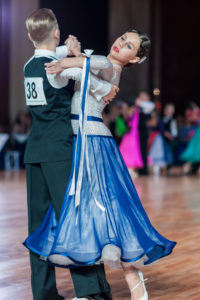The play, “MASTER HAROLD” … and the boys”, takes place on a rainy afternoon in a South African tearoom during the period of apartheid. There are no customers – only the two black waiters, Sam and Willie, and Master Harold, the white adolescent son of the owners. The “boys” are getting ready to participate in a ballroom dancing competition with their girlfriends.

As the three while away the afternoon, the boys practice dancing and describe the upcoming event for Master Harold. When Harold imagines two couples bumping into one another on the dance floor, the waiters collapse in laughter.
Sam explains, “There’s no collisions out there, Hally. Nobody trips or stumbles or bumps into anybody else. To be one of the finalists on that dance floor is like… like being in a dream about a world in which accidents don’t happen.”
As he was beginning to study ballroom dance, Pierre Dulaine recounts a similar experience. “When I stepped into the Garryowen Ballroom … all my troubles were suddenly left behind. What I saw was like a fantasy world. All the women were in ball gowns; the men, in white ties and tails. I felt as if I was in a dream, except that I never knew such dreams existed.”
Dance, it seems, has the power to awaken utopian dreams. We may only be able to dream as the music lasts. But as Sam comments to Hally, “It starts with that. Without the dream we won’t know what we’re going for.”
